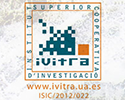John of Damascus and the use of the letters of Paul in his writing An Exact Exposition of the Orthodox Faith
Eirini ARTEMI
Published in Manifestations of the Ancient and Medieval World
Keywords: Adam, Christology, John Damascenes, Moses, Orthodox Faith, Paul’s theology, Son of God.
In this paper, we are going to present how John Damascenes used the Pauline Literature to make the treatise An Exact Exposition of the Orthodox Faith, mainly the part of Christology. John uses the Pauline epistles in order to speak about the Deity. God gives us the ability to know Him through a mirror. John uses more texts from Paul's epistles than texts of other Church fathers. The passages from epistles are the base for the development of John's dogmatic teaching and arguments. So, by this way, we will reach to the conclusions that the main points in the teaching of John's this work are the some of the main points in the theology of St. Paul mainly. The sin of Adam, and each one’s personal sins, all men are sinners and in need of redemption. In order to save mankind, God sent his Son into the world, born of a woman. Christ communicates his grace and justifies all who believe in him, and are baptized. Christ's grace includes the sending of the Holy Spirit, which constitutes the believer as an adopted child of God. Jesus is the fulfilment of all the prophecies of the Old Testament, and has established a New Covenant to replace that of Moses; therefore, Christians are not bound by the ceremonial and dietary laws, and circumcision, contained in the Law of Moses. This insight of Paul made Christianity into a religion open to all people.
Moses and the gnosiology of God, according Gregory’s of Nyssa interpretation in Canticum Canticorum
Eirini ARTEMI
Original title: Moses and the gnosiology of God, according Gregory’s of Nyssa interpretation in Canticum Canticorum
Published in Art, Criticism and Mysticism
Keywords: Agnoia, Canticum Canticorum, Gnofos, Gnosiology, Gregory of Nyssa, Ignorance, Knowledge, Moses.
This paper seeks to provide an exposition on Gregory of Nyssa’s work on how Moses could “know” and “see” God. Humanity and God stand on two very different planes of existence. Moses “knew” God, because he tried to leave with God’s order. Every time that Moses made a movement that included a kind of his sacrifice, God appeared to him. God presented Himself to Moses through the burning bush. Gregory underlined that that every person, included Moses, can know the essence of God – one cannot know what God is. However, one can know “that God is” – meaning that we can know that God exists. Moses had many “visions” of God and Gregory explained that it is not possible for any man to describe these God’s revelation to Moses, because “Humans are not capable of this knowledge because it is “other than” or “beyond” them”. Moses wanted to see God all the time. Gregory reminded his audience that erotic desire mirrors spiritual desire only in part; spiritual desire – and ultimately the divine nature – cannot be limited to erotic desire. Thus, Gregory of Nyssa highlighted both God’s imminence and God’s transcendence. Moses wanted to see the same face of God. His desire was expressed to God. He knew that Salvation is achieved through knowledge about God, but in Christian dimension. This knowledge determined both humans and the form and content of their life. The knowledge for God is no longer man’s work in Christian teaching. It is the work of faith to the revealed truth. For this high feat-conquest has as assistant only the faith of man to God and the grace of God to man.






















































































